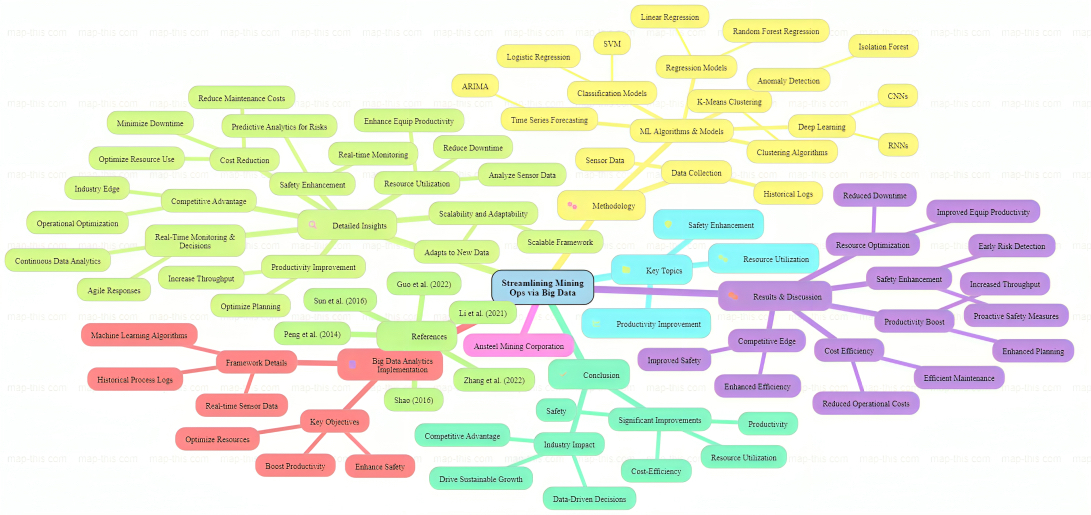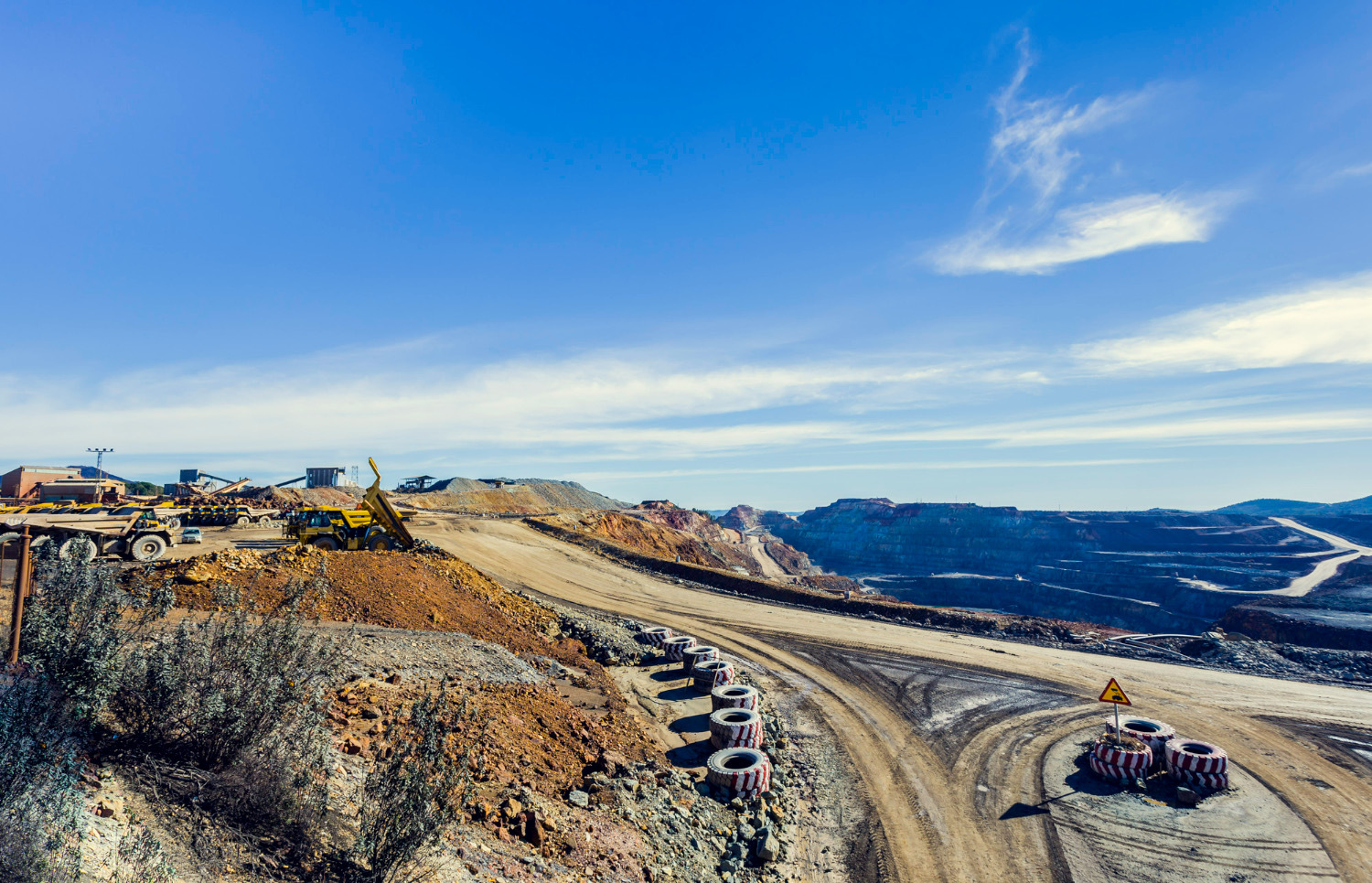In the era of net-zero carbon emission commitment by India, the mining industry faces challenges beyond carbon footprint alone. Some key Challenges such as excessive waste usage, electricity usage, and most importantly, the health and safety of miners are the key concerns not only in India but big names like RioTinto, BHP Billiton, Anglo American, Barrick Gold, and Vale are leading the pack by finding smart solutions to common challenges. They’re not just about digging anymore. They’ve figured out clever ways to tell how rich the ore is, decide where to dig next, and even make sure everyone stays safe on the job. They’ve turned to cool tech stuff like AI and machine learning to do all this. It’s not just about making money for them; it’s also about doing things right and looking out for their workers. By using these high-tech tools, they’re making mining smarter, safer, and better for everyone involved.
In India, copper mining companies are working hard to catch up with the big names, but they’re facing some tough challenges along the way. Things like using too much water, gobbling up power (Electricity, heat), running out of resources, and polluting the environment are making it tricky. To tackle all these problems, Indian mining companies need to take things one step at a time. They can start by using smart, data-driven solutions right from the beginning when they’re looking for new sites to dig. Then, they can keep using these high-tech tools throughout the process, from digging up the copper to turning it into shiny metal sheets. It’s a long journey, involving lots of steps like exploring, drilling, blasting, hauling, crushing, grinding, and refining, but with the right approach, they can do it while being kinder to the environment and smarter about how they use resources.
Here are the opportunities where AI can make a significant impact in copper mining focusing on key sub-processes and their potential benefit.

1. Blasting
Efficiency: Big data and machine learning can transform blasting operations by optimizing the use and placement of explosives. Analyzing sensor data can predict the precise amount and location needed for effective rock fragmentation.
- Safety and Environmental Impact: Advanced data analysis can make blasting safer and more environmentally friendly by minimizing overbreak and reducing emissions.
- Cost Reduction: Improved precision in blasting operations can lower operational costs and reduce waste.
2. Smelting
- Energy Optimization: AI and big data can fine-tune temperature control during smelting, reducing the consumption of electricity or coal, especially for different grades of ore.
- Quality and Consistency: These technologies can predict and manage the optimal mix of additives, ensuring consistent output quality and minimizing waste.
- Equipment Performance: Monitoring and predicting equipment performance can enhance safe operation, prevent unexpected downtime, and extend equipment lifespan.
3. Ore-Grading
- Precision in Ore Quality: Big data and machine learning can analyze sensor and imaging data to determine ore quality accurately, enabling real-time sorting and classification.
- Cost Efficiency: This precise grading ensures that only high-quality ore is processed, preventing the high operational costs associated with processing lower-quality ore.
By adopting these technologies, Indian copper mining giants can significantly improve their operational efficiency, reduce costs, and minimize their environmental footprint, addressing the critical challenges they face.

Streamlining Mining Operations via Big Data and Machine Learning
Innovative Approaches Transforming Copper Mining
1. The Story of Rio Tinto’s Technological Leap
Imagine a single decision that could transform an entire industry. That’s exactly what Rio Tinto achieved with their copper mines. By harnessing the power of data analytics and machine learning, they revolutionized their mining operations, making them more efficient and cost-effective.
At the heart of this transformation is the Operations Centre in Perth. Here, real-time data is used to manage everything from equipment health to logistics. Sensors on the equipment provide constant data streams, allowing operators to monitor conditions and predict maintenance needs before breakdowns occur. This means safer, more efficient, and more productive mining operations.
The story begins in the mid-2000s when Rio Tinto faced a major challenge. During a global commodities boom, finding enough skilled workers for remote mining locations was tough. Truck drivers were earning over $250,000 a year, and workers had to fly in for long shifts, living in temporary camps.
To tackle this, Rio Tinto launched the ‘Mine of the Future’ initiative in 2008. They started with trials of autonomous vehicles. By 2010, they had set up the Operations Centre in Perth, where over 400 operators managed 3D visualizations of equipment across 15 mines, 31 pits, four ports, and 1,600 km of rail networks. Real-time data analytics were used to track productivity and safety on a massive scale.
The innovation didn’t stop there. In 2015, Rio Tinto introduced fully autonomous trucks in several of their iron ore mines and planned to expand this technology further. They also launched autonomous drills and used machine learning to improve the process of extracting refined minerals from ore.
The key benefits are clear:
- Safety: Operators are kept out of harm’s way.
- Cost Efficiency: Significant savings on wages for truck drivers.
- Increased Productivity: Less downtime from shift changes and fewer human errors.
Rio Tinto’s success story is a powerful example of how innovation and technology can overcome industry challenges. Their use of data analytics and machine learning has set a new standard for efficiency and safety in mining, paving the way for a brighter future.
2. Energy optimization in the froth flotation process
Optimizing the froth flotation process in copper mining is tough, but with machine learning (ML) and advanced data analytics, we can make real progress. First, we gather data from all sorts of sources – sensors tracking chemical levels, air flow, slurry conditions, and even the grade of the ore itself. With this data in hand, we unleash powerful algorithms like neural networks and decision trees. These smart systems study historical data to learn all the complex patterns and relationships in the flotation process.
Once they’ve learned from the data, these ML models become valuable tools. They can continually analyze new real-time sensor data, spot trends, and automatically adjust process settings for the best performance – like having a team of expert engineers working around the clock without breaks. And it gets better – as we implement the models’ recommendations, the new process outcomes get fed back in. This allows the models to keep learning and fine-tuning for continuous improvement. It’s a game-changing approach that uses big data, ML, and advanced analytics to boost efficiency, reduce costs, and make copper mining more sustainable and profitable than ever before and these solve the major problems of mining companies.
The key benefits are-
- Increased copper recovery
- Reduced chemical and energy usage
- More sustainable operations
3. Ore grade estimation in copper mining
Accurately estimating ore grades is crucial for successful copper mining operations. Traditional techniques often fall short in capturing the complex relationships between exploratory data and ore distributions in mining zones. However, machine learning (ML) and AI can assist ore grade modeling to new heights. The process begins with gathering data from multiple sources, including geological databases, geochemical assays, geophysical surveys, drone and satellite imagery, and past mining records. This diverse data is then processed to handle missing values and reduce dimensions, preparing it for accurate modeling. Later, powerful ML algorithms like random forests, gradient boosting, and central neural networks (CNN) are trained on labeled datasets. These datasets link input features, such as rock type, mineral composition, and structural data, to target variables like ore grades. Through iterative training, the models learn to recognize intricate patterns that are difficult for humans to see.
Once optimized, these ML models can predict ore grades for new exploration sites or existing mines with high accuracy. Using an ensemble of multiple models can further enhance performance and resource minimization in exploration by miners. Additionally, computer vision with deep learning can extract valuable ore characteristics from core samples and images, complementing the grade estimation. Unsupervised techniques like clustering reveal hidden data patterns, enabling exploratory analysis and providing deeper insights. When combined with geostatistics and mining expertise, ML and AI produce high-fidelity 3D ore-grade models and resource estimates. This data-driven decision guides optimal mine planning, forecasts metallurgical performance, and supports strategic planning. It maximizes economic returns while minimizing environmental impact—a win-win for profitability and sustainability in copper production.
The key benefits are –
- Improved Accuracy: ML and AI enhance ore grade estimation accuracy by recognizing complex data patterns, surpassing traditional methods.
- Efficient Resource Allocation: ML models optimize resource use in exploration and extraction, minimizing waste and maximizing productivity.
- Sustainability: ML-driven decision-making ensures profitability while minimizing environmental impact, fostering sustainable copper production practices.
4. Safety and Security of miners
In the context of Indian mining operations, the security issue and the potential for interruptions caused by internal stakeholders and external threats are challenging. The direct involvement of workers in mines and the possibility of outside interference can easily disrupt mining activities, posing risks to safety and productivity. Think about a solution where you can protect your mines easily. The key is to install CCTV cameras on your premises. But we know that running these cameras every day can be tough, needing constant supervision by a worker. What if there was a better way? We can install advanced surveillance solutions: smart cameras with built-in algorithms that automatically detect and record safety and security issues. Imagine having such smart cameras that watch your mining site 24/7, instantly alerting authorities to any problems. This means quick action to stop small issues from becoming big ones. It boosts security by keeping unauthorized people and potential threats out, and it improves worker safety by ensuring safe practices and reducing accidents and injuries. Plus, it cuts costs related to accidents and compensation claims. But are we ready for this solution? Real-world examples prove its impact. Recently, Tadoba Andheri Tiger Reserve started using this technology to effectively report incidents and reduce human-tiger conflicts. Stay tuned to learn how this innovation can transform safety and security in your industry.
The key benefits are-
- Enhanced Security: Smart cameras with built-in algorithms detect and record safety issues, boosting security and alerting authorities to potential threats.
- Improved Safety: Continuous monitoring ensures safe practices, reducing accidents and injuries among workers, leading to a safer work environment and lower costs.
In the world of copper mining, Valiance Solutions can offer game-changing solutions tailored to your needs. Using advanced AI, data engineering, and cloud technology, we’re here to transform your operations. Our expertise includes predictive modeling for mineral likelihood assessment, real-time monitoring for Power Transmission Utilities, and defect identification systems for Foam manufacturing units, and many more. Our Machine Learning Models accurately predict mineral deposits, helping you optimize exploration and boost productivity. The Intelligence suite ensures smooth operations for Power Transmission Utilities with predictive analytics and proactive maintenance. Meanwhile, our Video-based defect identification system improves Foam manufacturing quality control, reducing waste and streamlining production. With Valiance Solutions, the mining industry get customized solutions that drive efficiency and long-term growth. Join us in embracing digital transformation and unlocking your potential. Let’s shape a future of innovation and sustainable success together.
Rajneesh Singh is a seasoned professional with experience in ship operations. He has a comprehensive marketing, sales, and process optimization background within the maritime industry. Rajneesh is dedicated to enhancing operational efficiencies and implementing effective strategies to drive success. Alongside his maritime expertise, he has a keen interest in fintech, staying abreast of the latest developments and innovations in financial technology. His diverse skill set and passion for continuous learning make him a valuable asset.




